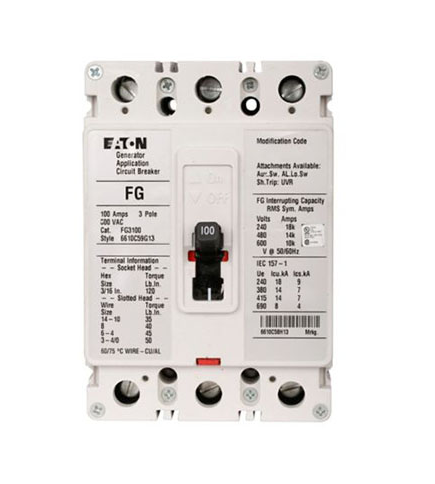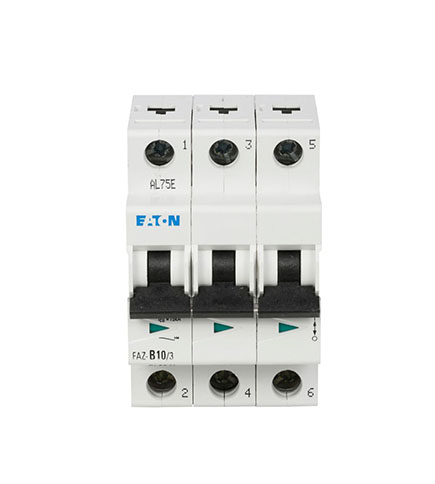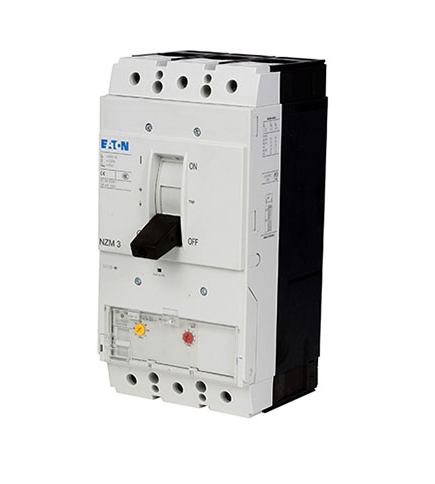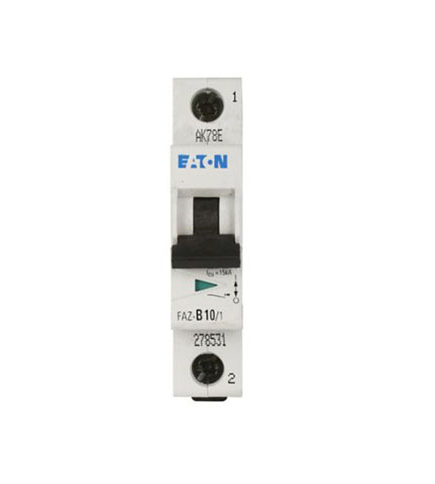
Hos ACPNUMEN er vi forpliktet til å tilby banebrytende løsninger for sikringsbrytere til ulike industrier. Vårt fokus på forskning og utvikling har gjort det mulig for oss å ligge i forkant når det gjelder å skape innovative produkter. Våre sikringsbrytere er designet for å tåle de hardeste miljøene og levere maksimal ytelse under ekstreme forhold. Med ACPNUMENs sikringsbrytere kan du stole på at din telekommunikasjonsinfrastruktur vil forbli trygg og sikker.
Som en global leder i vår bransje forstår vi at ingen to virksomheter eller applikasjoner er like. Derfor jobber vårt team av eksperter tett med kundene for å utvikle skreddersydde løsninger tilpasset deres spesifikke behov. Enten du ser etter en sikringsbryter for å beskytte nettverket ditt mot strømstøt eller en for å sikre trygg drift av sensitive elektronikk, har ACPNUMEN deg dekket.
Vår forpliktelse til kvalitet gjenspeiles i våre strenge kvalitetskontrollprosesser og omfattende produkttesting. Vi tror at ved å investere i komponenter og materialer av høyeste kvalitet, kan vi levere produkter som overgår forventningene. Hos ACPNUMEN er vi dedikert til å sikre at våre kunder får ingenting annet enn det beste.

Innen elektronikk er ACPNUMEN en fremtredende beskytter av kretser gjennom sine topp sikringer som er laget for å beskytte avgjørende operasjoner innen områder som telekommunikasjon, kommunikasjon, bil elektronikk, digital kretsløp og industrielle kontroller. Våre sikringer garanterer kontinuitet og uavbrutt tjenesteyting.
Funksjonalitet er i første rekke dominerende i verden, derfor er viktigheten av ACPNUMEN sikringer som beskytter komplekse, delikate elektronikk mot overstrømmer som skader dem. Hver av disse sikringene er designet med den nyeste teknologien for å muliggjøre rask respons fra sikringen uten å påvirke hvordan andre systemer som er koblet til den fungerer. Fra å beskytte integriteten til bil elektronikk eller forhindre katastrofale feil i telekommunikasjonsnettverk, presenterer ACPNUMEN det perfekte valget for designere og ingeniører over hele verden.

I elektrisk vern er ACPNUMEN ein framtredande leverandør av brytere som betjener ulike industriar. Dei beste brytarane våre er for kommunikasjon, telekommunikasjonsutstyr, bilelektronikk, industriell kontroll og digitale kretsar, som sikrer kontinuerleg drift og tryggleik for bedriftsvernet ditt.
ACPNUMEN sine brytarar er det beste alternativet for å verne elektriske systemer. Dei er utformde med presisjon og stor omhu slik at dei kan tåle krevjande omstende både i kommunikasjonsnettverk og i automotive applikasjonar. Poenget med desse apparatane er å trippa i tilfelle det er ein uvanlegheit i strømfløyet slik at det verner krinsen mot å bli skadd. Når du veljer brytarane våre, gjer du ei strategisk investering i langsiktig drift og effektivitet i bedriften din.
ACPNUMEN erkjenner at moderne industrier treng produktane sine til å fungere godt når det gjeld brytar. Ekspertarane våre strevar stadig etter å innovera og forbetra produktsortimentet vårt slik at vi kan oppfylle dei dynamiske behovene til kundane våre. Anten du er involvert i telekommunikasjonsindustrien eller har komplekse systemer som styrer industriar, så gjer bruken av brytaren vår ein betre ytelse slik at det er minst mulig å plassere og integrera. ACPNUMENs brytarar vil sikre eit jevnt kjørarutstyr gjennom heile, og dermed verne mot ødeleggingar og nedetid på verdifulle gjenstandar.

ACPNUMEN er et elektrisk komponentmerke som har vært en av de beste i mange år nå, og det er glad for å avduke sitt komplette utvalg av sikringer som er ment å møte de mangfoldige behovene i dagens industri. Som en ledende produsent av sikringer, streber ACPNUMEN etter å tilby kvalitetsløsninger som forbedrer sikkerhet, effektivitet og pålitelighet i flere elektriske systemer.
ACPNUMENs strømbrytere er designet spesifikt for å gi overlegen beskyttelse mot kortslutninger og overbelastninger som resulterer i sikkerhet for utstyr og personell. Selskapets forpliktelse til kvalitet kan sees i alle produktene deres, fra den robuste designen til de nøyaktige produksjonsprosessene. Med ACPNUMENs strømbrytere har brukerne ingenting å bekymre seg for angående sine elektriske systemer.
I tillegg tilbyr ACPNUMEN eksepsjonell kundeservice og støtte sammen med sine høykvalitets varer. Den tekniske hjelpelinjen, tilpassede svar, etter-salgs omsorg håndteres alle av selskapets eksperter. Enten du trenger generiske strømbrytere eller tilpassede, stol på ACPNUMEN med sikkerheten og påliteligheten til din elektriske infrastruktur.

Som en ekspert på brytere, er ACPNUMEN forpliktet til å tilby førsteklasses løsninger for sikringsbrytere som sikrer at elektriske systemer er trygge og pålitelige. Ved å fokusere på kommunikasjon, telekommunikasjonsutstyr, bil elektronikk, industriell kontroll, digitale kretser og andre relaterte felt, sørger vi for at produktene våre imøtekommer ulike krav fra våre kunder. På denne måten unngår de avanserte sikringsbryterne overbelastning og kortslutninger som beskytter elektriske apparater mot brannrisiko.
Innovasjon og kvalitet er ting vi er stolte av hos ACPNUMEN. Vi bruker avansert teknologi og høykvalitetskomponenter når vi designer våre brytere. Derfor fungerer de godt under forskjellige elektriske forhold, noe som gjør dem ganske holdbare. Enten du trenger hjemme- eller kommersielle baserte sikringer, eller til og med de som brukes i industrien, er vi lett tilgjengelige for å veilede deg gjennom hele prosessen med valg, helt fra hvor passende alternativer som vil fungere best for deg kan finnes.

ACPNUMEN Grunnlagt i 1998, er gruppen en omfattende tjenesteleverandør som fokuserer på kraft elektroniske produkter. Den har signert en samarbeidsavtale med Eaton Bussmann, et av Fortune top 500 selskap i USA! For tiden fokuserer selskapet på kommunikasjon, telekommunikasjonsutstyr, bil elektronikk, industriell kontroll, digital krets og andre felt. Siden etableringen har vi alltid trodd at: Kvalitet er grunnlaget for bedriftens overlevelse, omdømme gjør utviklingen kontinuerlig, innovasjon gjør bedriften strålende.
Vi har fått mange agensrettigheter fra kjente merker, som Eaton Bussmann, On-Bright, Littelfuse, Conquer, Sino fuse, Allen-Bradley, Aupo, Wago, Sanyou og andre.
Vi har 26 år med erfaring innen kretssikring.
24 timer service hver dag, rask svar innen 2 timer.
100% opprinnelige merkeprodukt, 100% kvalitetssikring, fullstendige sertifiseringer.
En sikringsbryter er en elektrisk bryterdesignet for automatisk å avbryte strømmen i en krets når den oppdager en overbelastning eller en kortslutning.
Sikringsbrytere brukes i ulike industrier som kommunikasjon, telekommunikasjonsutstyr, bil elektronikk, industriell kontroll og digital kretsløp. De gir beskyttelse til elektriske kretser innen disse områdene.
Ja, sikringsbrytere kan tilbakestilles etter at de har utløst. Når feilen er løst, kan sikringsbryteren tilbakestilles manuelt ved å sette den tilbake til "PÅ"-posisjon. Det er imidlertid viktig å identifisere og adressere den underliggende årsaken til utløpet for å forhindre gjentakende problemer.
Sikringsbrytere kommer i ulike typer og størrelser for å imøtekomme forskjellige elektriske systemer. Det er viktig å velge en sikringsbryter som passer til spenningen, strømmens vurdering og andre spesifikasjoner som kreves av din spesifikke applikasjon.


2024 © Shanghai King-Tech Electronic Co., Ltd. Personvernerklæring